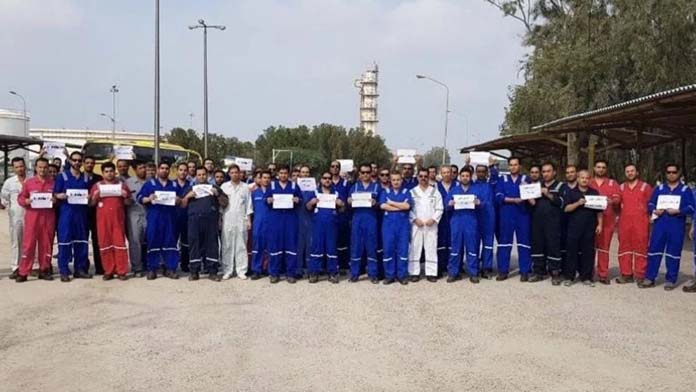The protests in Iran that began following the death of Mahsa Amini in September have now continued for more than 100 days.
The uprising has faced brutal crackdown after crackdown. The regime has relied on police brutality, mass arrests and executions to quell protest.
Since December, it has begun carrying out executions of protesters following sham trials. Four people have been executed, and over 100 more face the death penalty.
Over 500 people have been killed during the protests, with 20,000 having faced arrest. Many protesters have been shot in the eyes or genitals by police, or beaten and killed.
While the scale of the repression has slowed the protests, they have not disappeared.
Women are still playing leading role in the protests, with demands against the compulsory hijab and against sexism at the centre of the uprising.
Victories have been accomplished in changing attitudes toward women. The protests have fused demands for furthering the rights of women to the need for social and economic justice.
University campuses have become a major focus of struggle. The power of student struggle was marked heavily on “Student Day” last month.
The day commemorates the events of 7 December 1953, when students at Tehran University protested Iran’s resumption of relations with Britain. This came in the wake of US and UK-sponsored coup against the Mossaddegh government which had tried to nationalise Iran’s oil.
It was marked in 2022 by three days of struggle, with a call for a nationwide strike.
Students at Tehran and Modares University decorated the walls in slogans and broke down gender segregation in their educational facilities. This led to mass arrests at the hand of Basiji paramilitary squads, who have imprisoned over 500 students.
The repression shows the regime’s fear of the protest actions. Students’ demands for, “bread, work, freedom” are part of a conscious effort to connect with workers and the wider population. This shows how the protests have fused demands for democracy with economic demands.
A slogan from Tehran University proclaimed, “we are the children of workers, we will stand by their side”.
There were also limited workers’ strikes as part of the protests including some teachers.
In 40 cities, shopkeepers joined the three day strike. Iranian academic Peyman Jafari has noted the importance of this as “the emergence of a fragile coalition” between the middle class and protesters.
While the uprising so far has been heroic, it is not yet powerful enough to topple the regime.
As Jafari notes, this would need to involve, “hundreds of thousand or millions” taking to the streets, not just the, “thousands of people we are currently seeing”.
Strike action
Also crucial is widening the movement to include the working class and the kind of mass workers’ strikes that can paralyse the economy.
Workers’ strikes are taking place on a small scale. In Hormozgan, oil and steel employers have been forced to pay major wage arrears. Successful workers’ action has forced the bosses to act on the demands of the workers. The bosses are well aware workers must be placated to prevent these strikes growing and becoming part of the uprising.
However over 200 workers were also arrested following protests at the Asaluyeh and Abadan Refineries in September.
On 31 December contract workers at Iran’s biggest oil refinery in Abadan held stoppages on repairs and safety checks over pay demands, and well as a rally outside the company’s head office. Workers at other oil and gas installations around Iran also held protests. The Abadan refinery produces 400,000 barrels of oil daily and is of key importance to the Iranian economy.
Another round of oil and gas workers’ strikes and protests began on 17 January in at least six different facilities across Iran. This time permanent employees also joined the small-scale protests and stopworks over pay.
There have been a series of other strikes since the uprising began, often held to coincide with major days of protest. Teachers staged their own strikes on December 11 and 12 over pay in over 60 cities across Iran.
The scale of state repression poses challenges for workers’ organising. Iran’s economic crisis is helping fuel the protests and bitterness against the regime but also makes sustained strike action more difficult. Inflation has risen to 50 per cent and the cost of living is soaring. Youth unemployment is also over 50 per cent.
For the uprising to turn into revolution there will need to be a deepening of the scale of the movement through organising much larger working class action and larger protests.
By Angus McFadden






